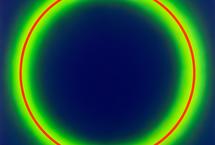Galería Javier López is pleased to announce an exhibition by Spanish artist, JOSÉ Mª YTURRALDE (Cuenca, 1942). This assorted display of the artist’s work combines his newest paintings with a selection of pieces from previous decades.
José Mª Yturralde began his formative years in the 60s along with the circle of artists that emerged in Cuenca around the prestigious figure of Fernando Zóbel and the well - regarded Museo de Arte Abstracto Español. Yturralde would eventually become part of this institution as assistant curator. Sheltered by this creative circle - composed among others by: Zóbel, Gerardo Rueda, Gustavo Torner or Antonio Saura - emerged the artists that would fill in the pages of Spanish art history; and introduce the styles of Pop Art and New Geometry for the first time in the country. Yturralde was highly involved in what is known as Juan Antonio Aguirre’s New Generation or the Valencian grouping Antes del Arte (Before Art) championed by art critic Vicente Aguilera Cerni in 1967. It was this latter group that developed a style fundamentally based on op and kinetic art that aimed at exploring the possible links between science and art. This early reflections were projected by Yturralde into "Figuras Imposibles;" images that had a great impact on the late 60s and of which we have an example in our exhibition.
This interest in exploring the relation between science and art would foster his relocation to Madrid. His enrollment in Madrid’s Centro de Cálculo de la Universidad Complutense in 1968 would offer him among other artists the unique opportunity to experiment with computers to generate art pieces. In fact, this would signal the arrival in Spain of cybernetic art. The group would continue to work in optical laboratories with laser and holography at Valencia’s University. In 1975, he is given the chance to study and work as a Research Fellow at the Center for Advanced Visual Studies of MIT (Massachusets Institute of Technology,) where he could deepen his investigations by using new technologies susceptible to their application in art (lasers, optical fibers, natural energy sources, etc.) and encounter figures like: Giorgy Kepes, Otto Piene, Jürgen Claus, Walter de Maria and Mark Mendel. During this time, he produces his first "Estructuras voladoras" (Flying Structures,) tridimensional works capable of flying. One can find examples of this type of work at the Centro de Arte Reina Sofía that currently presents a retrospective exhibition of Spanish Conceptual Art.
In the mid-eighties, whilst he does not entirely forgo geometry and multidimensionality, his fascination with the limits of paint will bring him, once again, back to the canvas. This would enable him to highlight the properties of color, another temporal and expressive element, and to use chromatic ranges as subtle light variations that act upon ones emotions and mind-set. As Daniel Giralt - Miracle noted: Yturralde’s canvases belong to another dimension, characterized by a spiritual use of color and space.
During his career, José María Yturralde’s work has featured in numerous exhibitions mounted throughout Europe, the United States, and Japan. Nationally, his first great retrospective was held in 1999 at the IVAM in Valencia.
